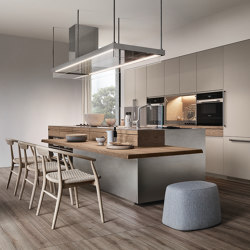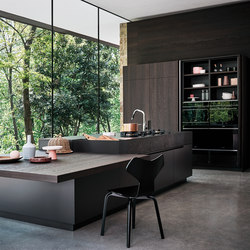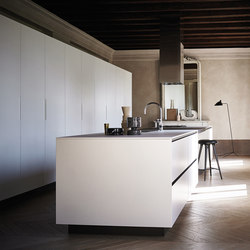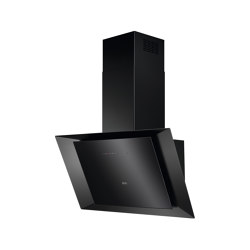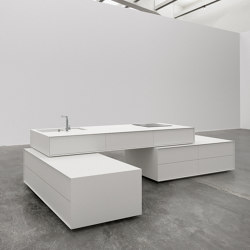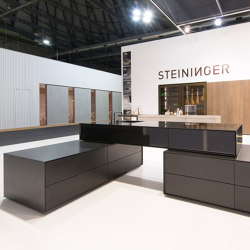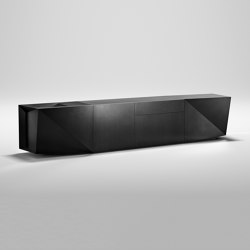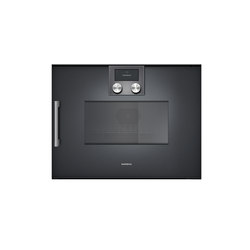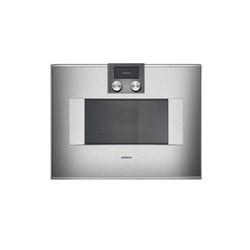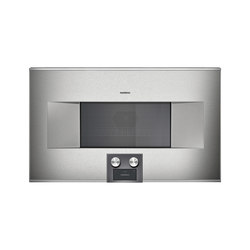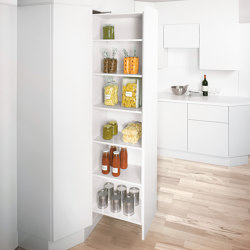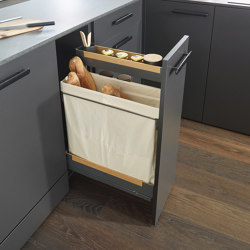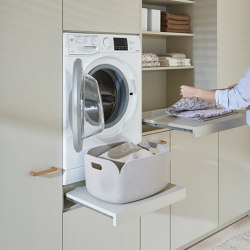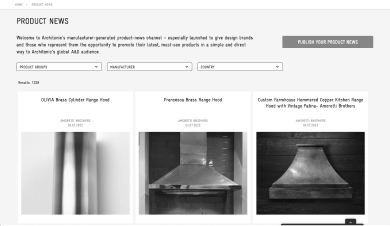Über LaCimbali
MEHR üBER LACIMBALI
The historic LaCimbali company is part of Gruppo Cimbali S.p.A., an Italian multinational that designs and produces traditional coffee machines as well as automatic, grinders, and ho.re.ca. accessories. Technological development and collaboration with designers like the renowned Castiglioni brothers enabled LaCimbali coffee machines to spread rapidly throughout Italy and abroad, thanks to the introduction of super-automatic systems that guarantee consistent quality, regardless of barista skills. Today the group counts on an extensive network of seven hundred distributors in over one hundred countries worldwide. LaCimbali produces two hundred machines daily in three factories in Binasco (Milan), Ghisalba (Bergamo) and Cappella Cantone (Cremona).
LaCimbali, a history of coffee and design, starting in Milan.
The history of LaCimbali began in 1912, when Giuseppe Cimbali opened a copper working shop in Milan. La Rapida, the first LaCimbali coffee machine, came eighteen years after the business started. It was a column-shaped machine with a vertical coal or wood fuelled boiler. La Rapida was followed in 1945 by the Albadoro, a device with two independent vertical boilers, a cup warmer and dispensing groups positioned frontally for the first time (to avoid baristas having to continually move around the machines).
The real revolution came two years later, with electricity and the invention of the lever, which made it possible to obtain the pressure necessary to extract everything that gives taste, aroma and body to a cup of coffee. These two game-changing innovations gave shape to the Ala, Gioiello and Brillante coffee machines.
Granluce, created in 1962 and equipped with a hydraulic group for completely automation, was a decisive step that allowed LaCimbali to market its coffee machines abroad. For LaCimbali, innovation goes hand in hand with design, a condition that marked the design and entrepreneurial milieu in Milan at the time. The Pitagora coffee machine was designed by the Castiglioni brothers and awarded the Compasso d'Oro for its extraordinarily modern design and essential and clean lines. The stainless steel structure was the first step in the industrialisation of LaCimbali products, mass-produced from that moment on.
Collaborations with other historic design figures include Rodolfo Bonetto and Shin Matsunaga. Experiments with total automation created super-automatic coffee machines that ensured consistently excellent results, contributing to the spread of espresso culture throughout the world. Today, the challenge for LaCimbali's latest-generation coffee machines is the search for new and innovative materials that guarantee durability and hygiene and the technological innovations that can optimise energy consumption. Such research has led to the advanced M100, designed for the company's centenary by the Milan-based Valerio Cometti+V12 Design studio. Further recognition came in 2020, when LaCimbali S60, designed by Cometti+V12 Design, was awarded the Good Design Award for its ability to encapsulate the best coffee-making technology in a structure with the same aesthetic qualities as a traditional machine.
MuMac, the first museum dedicated to coffee machines.
In 2012, on the occasion of the company's centenary, Gruppo Cimbali collaborated with Arkispazio and Valerio Cometti + V12 Design to design MuMAC, the Coffee Machine Museum. 1,800 square metres are dedicated to professional coffee machines, housing over two hundred models from the early twentieth century to the present day, displayed chronologically in six sections: The Early Years, The Age of Rationalism, The Invention of the Lever, Under the Flags of Design, The International Dimension and The New Millennium.
The historic LaCimbali company is part of Gruppo Cimbali S.p.A., an Italian multinational that designs and produces traditional coffee machines as well as automatic, grinders, and ho.re.ca. accessories. Technological development and collaboration with designers like the renowned Castiglioni brothers enabled LaCimbali coffee machines to spread rapidly throughout Italy and abroad, thanks to the introduction of super-automatic systems that guarantee consistent quality, regardless of barista skills. Today the group counts on an extensive network of seven hundred distributors in over one hundred countries worldwide. LaCimbali produces two hundred machines daily in three factories in Binasco (Milan), Ghisalba (Bergamo) and Cappella Cantone (Cremona).
LaCimbali, a history of coffee and design, starting in Milan.
The history of LaCimbali began in 1912, when Giuseppe Cimbali opened a copper working shop in Milan. La Rapida, the first LaCimbali coffee machine, came eighteen years after the business started. It was a column-shaped machine with a vertical coal or wood fuelled boiler. La Rapida was followed in 1945 by the Albadoro, a device with two independent vertical boilers, a cup warmer and dispensing groups positioned frontally for the first time (to avoid baristas having to continually move around the machines).
The real revolution came two years later, with electricity and the invention of the lever, which made it possible to obtain the pressure necessary to extract everything that gives taste, aroma and body to a cup of coffee. These two game-changing innovations gave shape to the Ala, Gioiello and Brillante coffee machines.
Granluce, created in 1962 and equipped with a hydraulic group for completely automation, was a decisive step that allowed LaCimbali to market its coffee machines abroad. For LaCimbali, innovation goes hand in hand with design, a condition that marked the design and entrepreneurial milieu in Milan at the time. The Pitagora coffee machine was designed by the Castiglioni brothers and awarded the Compasso d'Oro for its extraordinarily modern design and essential and clean lines. The stainless steel structure was the first step in the industrialisation of LaCimbali products, mass-produced from that moment on.
Collaborations with other historic design figures include Rodolfo Bonetto and Shin Matsunaga. Experiments with total automation created super-automatic coffee machines that ensured consistently excellent results, contributing to the spread of espresso culture throughout the world. Today, the challenge for LaCimbali's latest-generation coffee machines is the search for new and innovative materials that guarantee durability and hygiene and the technological innovations that can optimise energy consumption. Such research has led to the advanced M100, designed for the company's centenary by the Milan-based Valerio Cometti+V12 Design studio. Further recognition came in 2020, when LaCimbali S60, designed by Cometti+V12 Design, was awarded the Good Design Award for its ability to encapsulate the best coffee-making technology in a structure with the same aesthetic qualities as a traditional machine.
MuMac, the first museum dedicated to coffee machines.
In 2012, on the occasion of the company's centenary, Gruppo Cimbali collaborated with Arkispazio and Valerio Cometti + V12 Design to design MuMAC, the Coffee Machine Museum. 1,800 square metres are dedicated to professional coffee machines, housing over two hundred models from the early twentieth century to the present day, displayed chronologically in six sections: The Early Years, The Age of Rationalism, The Invention of the Lever, Under the Flags of Design, The International Dimension and The New Millennium.
MEHR üBER LACIMBALI


